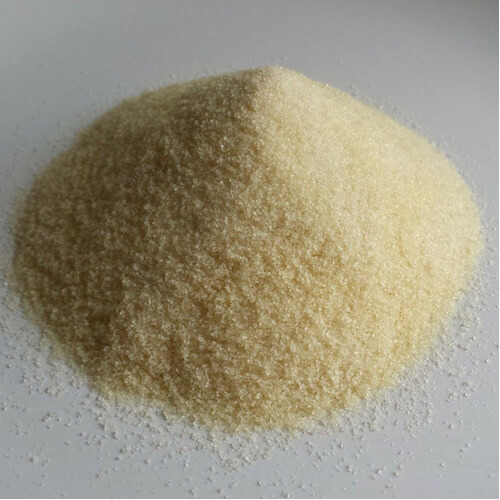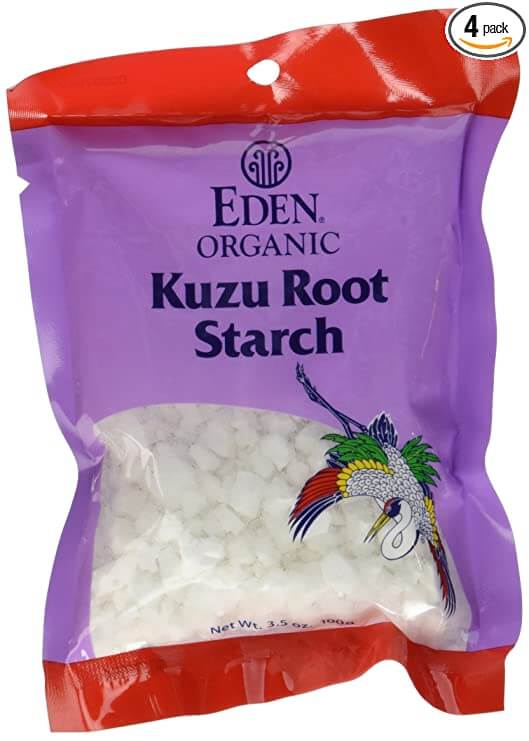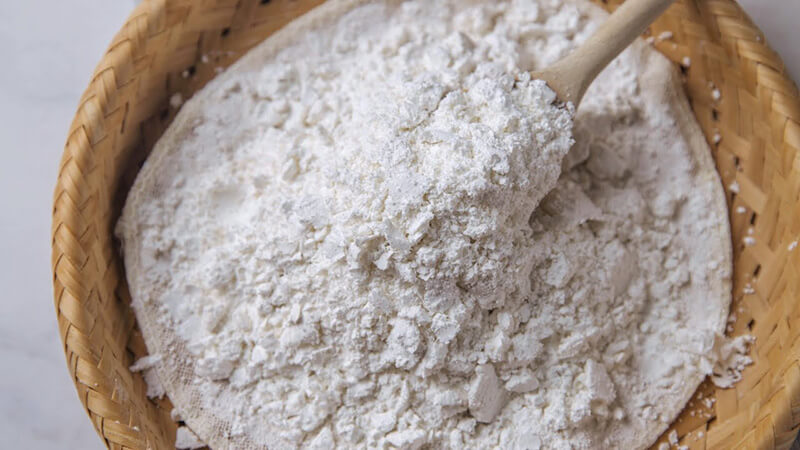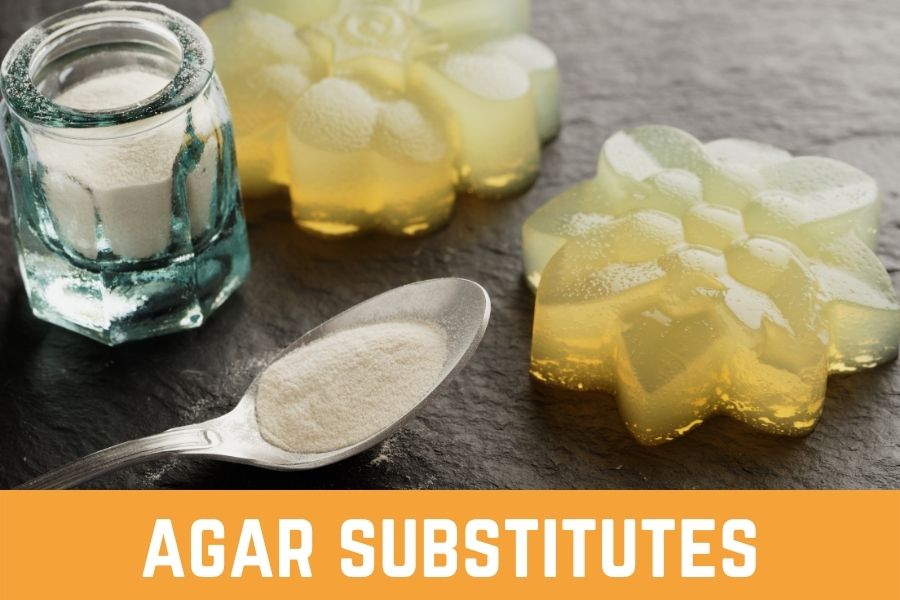Agar is used to making jellies and yokan.
It makes sweets plump and springy and is a perfect summer snack.
However, there are times when you want to make sweets, but you don’t have agar! That’s what happens sometimes.
Oh no! I don’t have any agar. What should I do…?
To begin with, there may be people who have never even heard of agar.
Agar is not always sold in supermarkets, and sometimes it takes a lot of effort to get it.
So, in this article, I’ll introduce you to some “agar substitutes” that can be useful in times of trouble, so please take a look at them!
What is Agar? Characteristics and roles
Agar is a jelly base made from seaweed.
It comes in powder form and is used to make jellies, puddings, and yokan.
Jellies made with agar are characterized by high transparency and elasticity, looking like clear ice, and are very beautiful when fruit or other ingredients are added.
It is also odorless and tasteless, so it is used when you want to bring out the taste and flavor of the ingredients.
When choosing a substitute for agar, it is a good idea to check for clarity and texture to see if the result is similar.
4 best agar substitutes
Agar substitute 1: Gelatin

The most common jelly ingredient is gelatin.
Like agar, gelatin can be used to make jellies, puddings, and yokan, so it can be substituted without any problems.
Also, gelatin is an ingredient that is often found in confectionery-making sections, so it is easy to get hold of, which is a good point.
However, it does not have the glossy transparency of agar and is probably a bit softer.
If you adjust the amount of gelatin, you can get a firm elasticity, but the transparency will be reduced. However, it can be used as a substitute for gelatin, as it will give a plump texture.
By the way, there are two types of gelatin: powdered gelatin and plate gelatin.
Both have the same ingredients and can be used as a substitute for agar, but gelatin sheets are smoother in the mouth.
Powdered gelatin can be dissolved in water, while gelatin sheets can be blended in water, but it depends on the product, so check the label carefully before use.
Agar substitute 2: Kuzu starch

Kudzu starch is made from the kudzu plant.
It is used to make kuzukiri and warabi mochi.
It can be used as a substitute for agar as it becomes sticky and plump.
However, since it is translucent, it does not look as pretty as agar, and the texture may be a little sticky and uncomfortable.
However, it has a plump texture and tastes good when cooled, so you can use it as a substitute for making sweets using agar.
Substitute for Agar 3: Marshmallows

Marshmallow” is a sweet and fluffy candy.
Marshmallows can be solidified like jelly because they contain gelatin.
In other words, marshmallows can be used as a substitute for the agar.
To use, rinse off the powder around the marshmallow with water and put it in a pot.
Put the ingredients you want to harden together, melt them while heating, and let them cool and harden, and you’re done.
Since marshmallows contain sugar and other sweeteners, you may want to use less sugar than in the recipe.
Substitute for Agar 4: Potato starch

Potato starch is used to thicken food.
You may think that it won’t turn out like jelly. But in fact, it can be used to make plump jelly.
It has a different appearance and texture from agar, but it can be used as a substitute when you want to harden something like jelly.
To use it, put the ingredients you want to harden and potato starch in a pan, heat it and melt it, then put it in a mold after removing the coarse heat, and let it cool and harden.
Amazingly, you can make jelly with familiar ingredients, isn’t it?
If you don’t have agar, try substituting potato starch, which is easy to use.
Points to note when substituting gelatin for agar
Gelatin, which can be used as a substitute for agar, is an ingredient for making jelly.
However, depending on the ingredients used, it may be difficult to harden, so care must be taken.
Familiar fruits such as “kiwi” and “pineapple” contain an ingredient called proteolytic enzyme.
These fruits contain a proteolytic enzyme that breaks down gelatin into pieces, blocking the coagulation process.
For this reason, gelatin cannot be used as a substitute for agar in recipes that use kiwi and pineapple.
What are the quantities when using agar substitutes?
I mentioned that you can use powders such as gelatin or agar as a substitute for the agar.
So how much should you substitute?
The amount varies from recipe to recipe, so it’s hard to say, but we recommend calculating the amount of water that can be solidified with the substitute.
For example…
5g of standard gelatin powder can solidify 250ml of water.
(*The amount that can be solidified differs depending on the product and how it is handled.
Please check the label to calculate the amount and try to substitute.
Summary
- Agar is a jelly base and is characterized by its high transparency and elasticity.
- When choosing a substitute for agar, you should check if the result is similar to transparency and plump texture.
- The following five are recommended as substitutes for the agar. [gelatin, agar, kudzu powder, marshmallow, potato starch].
- Kiwi and pineapple contain proteolytic enzymes, so they will not harden if substituted with gelatin.
- When using an agar substitute, calculate the amount of water that can be solidified by the substitute and use it. (5g of powdered gelatin can solidify 250ml of liquid)
